
ISSN 1004-5759 CN 62-1105/S

Acta Prataculturae Sinica ›› 2024, Vol. 33 ›› Issue (8): 112-121.DOI: 10.11686/cyxb2023358
Qi-rong SHEN( ), Jun YAN(
), Jun YAN( ), Xiao-xin YE, Yu-ying SANG, Qi-ling SHAN, Qi-teng ZHANG
), Xiao-xin YE, Yu-ying SANG, Qi-ling SHAN, Qi-teng ZHANG
Received:2023-09-25
Revised:2023-11-08
Online:2024-08-20
Published:2024-05-13
Contact:
Jun YAN
Qi-rong SHEN, Jun YAN, Xiao-xin YE, Yu-ying SANG, Qi-ling SHAN, Qi-teng ZHANG. A broomrape seed germination recognition method based on convolutional neural networks[J]. Acta Prataculturae Sinica, 2024, 33(8): 112-121.
项目 Item | 测试图像 Test image | 特征图 Feature map | 热力图 Heat map | 预测标签 Prediction label | 手动标签 Manual labels |
|---|---|---|---|---|---|
| a |  |  |  | 未发芽Ungermination | 未发芽Ungermination |
| b | 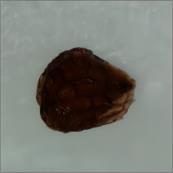 | 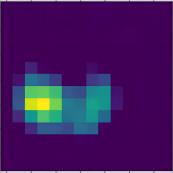 | 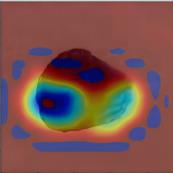 | 未发芽Ungermination | 未发芽Ungermination |
| c | 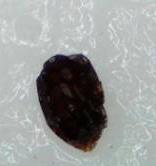 | 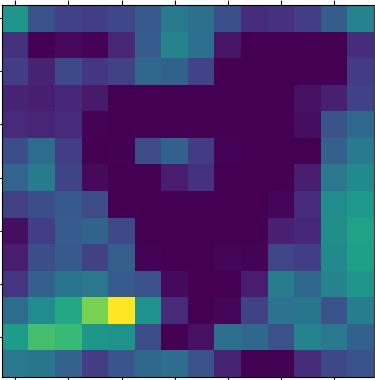 |  | 未发芽Ungermination | 未发芽Ungermination |
| d | 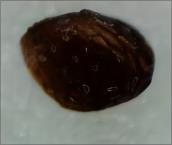 | 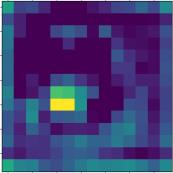 | 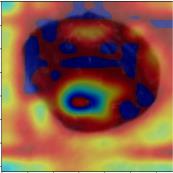 | 未发芽Ungermination | 未发芽Ungermination |
| e | 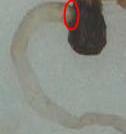 | 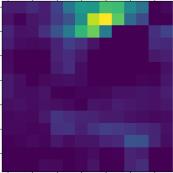 | 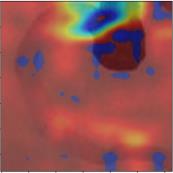 | 发芽Germination | 发芽Germination |
| f |  | 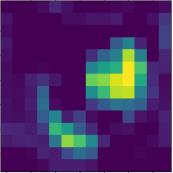 | 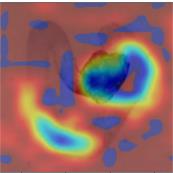 | 发芽Germination | 发芽Germination |
| g | 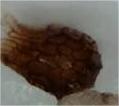 | 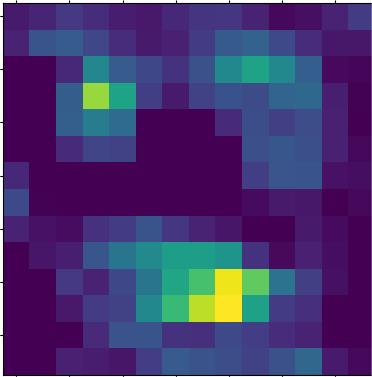 | 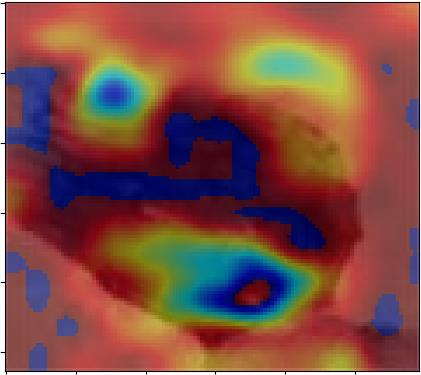 | 发芽Germination | 发芽Germination |
| h | 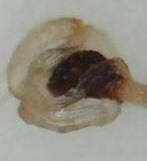 |  |  | 发芽Germination | 发芽Germination |
| i | 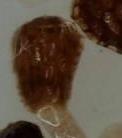 |  | 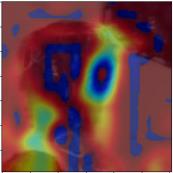 | 未发芽Ungermination | 发芽Germination |
| j | 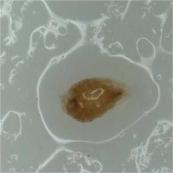 |  |  | 发芽Germination | 未发芽Ungermination |
| 混淆矩阵Confusion matrix | |||||
| 验证准确性Verify accuracy (%) | 95.2 | ||||
Table 1 Orobanche seed prediction results based on feature maps and heat maps
项目 Item | 测试图像 Test image | 特征图 Feature map | 热力图 Heat map | 预测标签 Prediction label | 手动标签 Manual labels |
|---|---|---|---|---|---|
| a |  |  |  | 未发芽Ungermination | 未发芽Ungermination |
| b |  |  |  | 未发芽Ungermination | 未发芽Ungermination |
| c |  |  |  | 未发芽Ungermination | 未发芽Ungermination |
| d |  |  |  | 未发芽Ungermination | 未发芽Ungermination |
| e |  |  |  | 发芽Germination | 发芽Germination |
| f |  |  |  | 发芽Germination | 发芽Germination |
| g |  |  |  | 发芽Germination | 发芽Germination |
| h |  |  |  | 发芽Germination | 发芽Germination |
| i |  |  |  | 未发芽Ungermination | 发芽Germination |
| j |  |  |  | 发芽Germination | 未发芽Ungermination |
| 混淆矩阵Confusion matrix | |||||
| 验证准确性Verify accuracy (%) | 95.2 | ||||
模型 Model | 训练准确率Train accuracy (%) | 参数量 Parameter quantity (No.) | 单图预测时间Single graph prediction time (ms) | 测试准确率 Test accuracy (%) |
|---|---|---|---|---|
| LeNet | 91.1 | 1.05×105 | 1.21 | 90.4 |
| VGG11 | 92.6 | 3.50×107 | 6.50 | 91.9 |
| AlexNet | 94.6 | 5.80×106 | 6.20 | 95.1 |
| ResNet18 | 95.7 | 1.17×107 | 8.43 | 94.7 |
| OB-Net | 95.3 | 1.21×106 | 2.50 | 95.2 |
Table 2 Performance comparison of different convolutional neural network models
模型 Model | 训练准确率Train accuracy (%) | 参数量 Parameter quantity (No.) | 单图预测时间Single graph prediction time (ms) | 测试准确率 Test accuracy (%) |
|---|---|---|---|---|
| LeNet | 91.1 | 1.05×105 | 1.21 | 90.4 |
| VGG11 | 92.6 | 3.50×107 | 6.50 | 91.9 |
| AlexNet | 94.6 | 5.80×106 | 6.20 | 95.1 |
| ResNet18 | 95.7 | 1.17×107 | 8.43 | 94.7 |
| OB-Net | 95.3 | 1.21×106 | 2.50 | 95.2 |
| 1 | Guo S C, Miao H M, Li S P, et al. Research advances in the breeding study of sunflower resistance to Orobanche. Crops, 2022, 38(3): 27-32. |
| 郭树春, 苗红梅, 李素萍, 等. 向日葵抗列当育种研究进展. 作物杂志, 2022, 38(3): 27-32. | |
| 2 | Ye X X, Zhang M, Dong S, et al. Conditioning duration and agents involved in broomrape seeds responding to germination stimulants. Plant Growth Regulation, 2017, 81(2): 221-230. |
| 3 | Fernández-Aparicio M, Cimmino A, Soriano G, et al. Assessment of weed root extracts for allelopathic activity against Orobanche and Phelipanche species. Phytopathologia Mediterranea, 2021, 60(3): 455-466. |
| 4 | Chen X F. Causes and comprehensive prevention and control measures of sunflower in Dingbian County. Modern Agricultural Sciences and Technology, 2010, 533(15): 215, 217. |
| 陈秀芳. 定边县向日葵列当发生原因及综合防治措施. 现代农业科技, 2010, 533(15): 215, 217. | |
| 5 | Ma Y Q, Dong S Q, Ren X X, et al. Parasitic weed Orobanche spp. and perspective of its control measures. Chinese Journal of Biological Control, 2012, 28(1): 133-138. |
| 马永清, 董淑琦, 任祥祥, 等. 列当杂草及其防除措施展望. 中国生物防治学报, 2012, 28(1): 133-138. | |
| 6 | Cui H X, Wang N, Long X Q, et al. Review of the species, hazard and management status of Orobanche L. in Xinjiang. Plant Quarantine, 2020, 34(3): 20-24. |
| 崔华星, 王宁, 龙宣杞, 等. 新疆列当种类、危害与防治现状. 植物检疫, 2020, 34(3): 20-24. | |
| 7 | Fernández-Aparicio M, Reboud X, Gibot-Leclerc S. Broomrape weeds//Underground mechanisms of parasitism and associated strategies for their control: a review. Frontiers in Plant Science, 2016, 7: 135. |
| 8 | Song W J, Zhou W J, Jin Z L, et al. Germination response of Orobanche seeds subjected to conditioning temperature, water potential and growth regulator treatments. Weed Research, 2005, 45(6): 467-476. |
| 9 | Zhang S, Zhang S, Zhang C, et al. Cucumber leaf disease identification with global pooling dilated convolutional neural network. Computers and Electronics in Agriculture, 2019, 162: 422-430. |
| 10 | Majumdar S, Jayas D S. Classification of cereal grains using machine vision: I. Morphology models. Transactions of the ASAE, 2000, 43(6): 1669-1675. |
| 11 | He X, Wang X M, Zhang H, et al. Convolutional neural network-based image recognition of forage seeds. Pratacultural Science, 2022, 39(11): 2338-2349. |
| 何欣, 王雪萌, 张涵, 等. 基于卷积神经网络的牧草种子图像识别. 草业科学, 2022, 39(11): 2338-2349. | |
| 12 | Özkan K, Işık Ş, Yavuz B T. Identification of wheat kernels by fusion of RGB, SWIR, and VNIR samples. Journal of the Science of Food and Agriculture, 2019, 99(11): 4977-4984. |
| 13 | Zhu S S, Zhou L, Gao P, et al. Near-infrared hyperspectral imaging combined with deep learning to identify cotton seed varieties. Molecules, 2019, 24(18): 3268. |
| 14 | Wan L Y. Research on automatic crop seed counting method based on image recognition. Chengdu: Chengdu University, 2020. |
| 万路瑶. 基于图像识别的作物种子自动计数方法研究. 成都: 成都大学, 2020. | |
| 15 | Khan M A, Akram T, Sharif M, et al. An automated system for cucumber leaf diseased spot detection and classification using improved saliency method and deep features selection. Multimedia Tools and Applications, 2020, 79(25): 18627-18656. |
| 16 | Lin C C, Shan C, Zhao G S, et al. Review of image data augmentation in computer vision. Journal of Frontiers of Computer Science and Technology, 2021, 15(4): 583-611. |
| 林成创, 单纯, 赵淦森, 等. 机器视觉应用中的图像数据增广综述. 计算机科学与探索, 2021, 15(4): 583-811. | |
| 17 | Moral J, Lozano-Baena M D, Rubiales D. Temperature and water stress during conditioning and incubation phase affecting Orobanche crenata seed germination and radicle growth. Frontiers in Plant Science, 2015, 6: 408. |
| 18 | Wen X. Modeling and performance evaluation of wind turbine based on ant colony optimization-extreme learning machine. Applied Soft Computing, 2020, 94: 106476. |
| 19 | Yang H Y, Huang Q, Sun A Z, et al. Rice seed image classification and recognition based on CNN_SVM. Journal of the Chinese Cereals and Oils Association, 2021, 36(12): 144-150. |
| 杨红云, 黄琼, 孙爱珍, 等. 基于卷积神经网络和支持向量机的水稻种子图像分类识别. 中国粮油学报, 2021, 36(12): 144-150. | |
| 20 | Hou J M, Yao E C, Zhu H J. Classification of castor seed damage based on convolutional neural network. Transactions of the Chinese Society for Agricultural Machinery, 2020, 51(S1): 440-449. |
| 侯俊铭, 姚恩超, 朱红杰. 基于卷积神经网络的蓖麻种子损伤分类研究. 农业机械学报, 2020, 51(S1): 440-449. | |
| 21 | Long M S, Ouyang C J, Liu H, et al. Image recognition of Camellia oleifera disease based on convolutional neural network & transfer learning. Transactions of the Chinese Society of Agricultural Engineering, 2018, 34(18): 194-201. |
| 龙满生, 欧阳春娟, 刘欢, 等. 基于卷积神经网络与迁移学习的油茶病害图像识别. 农业工程学报, 2018, 34(18): 194-201. | |
| 22 | Li Y D, Hao Z B, Lei H. Survey of convolutional neural network. Journal of Computer Applications, 2016, 36(9): 2508-2515. |
| 李彦冬, 郝宗波, 雷航. 卷积神经网络研究综述. 计算机应用, 2016, 36(9): 2508-2515. | |
| 23 | Zhang K, Xu Z, Dong S, et al. Identification of peach leaf disease infected by Xanthomonas campestris with deep learning. Engineering in Agriculture, Environment and Food, 2019, 12(4): 388-396. |
| 24 | Srivastava N, Hinton G, Krizhevsky A, et al. Dropout: a simple way to prevent neural networks from overfitting. The Journal of Machine Learning Research, 2014, 15(1): 1929-1958. |
| 25 | Lecun Y, Bottou L, Bengio Y, et al. Gradient-based learning applied to document recognition. Proceedings of the IEEE, 1998, 86(11): 2278-2324. |
| 26 | Selvaraju R R, Cogswell M, Das A, et al. Grad-CAM: Visual explanations from deep networks via gradient-based localization. International Journal of Computer Vision, 2020, 128(2): 336-359. |
| 27 | Wang H, Zhao W T, Chen L F, et al. Collection and preprocessing methods of broomrape (Orobanche spp. and Phelipanche spp.) seeds. Journal of Weed Science, 2016, 34(1): 22-25. |
| 王焕, 赵文团, 陈连芳, 等. 列当 (Orobanche spp. and Phelipanche spp.) 种子的采集与预处理方法. 杂草学报, 2016, 34(1): 22-25. |
| [1] | WANG Zhao-qi, LIN Hui-long. Features and application of a rangeland detection algorithm based on fractal dimensions to detect characteristics of barren patch [J]. Acta Prataculturae Sinica, 2011, 20(2): 156-162. |
| Viewed | ||||||||||||||||||||||||||||||||||||||||||||||||||
|
Full text 237
|
|
|||||||||||||||||||||||||||||||||||||||||||||||||
|
Abstract |
|
|||||||||||||||||||||||||||||||||||||||||||||||||